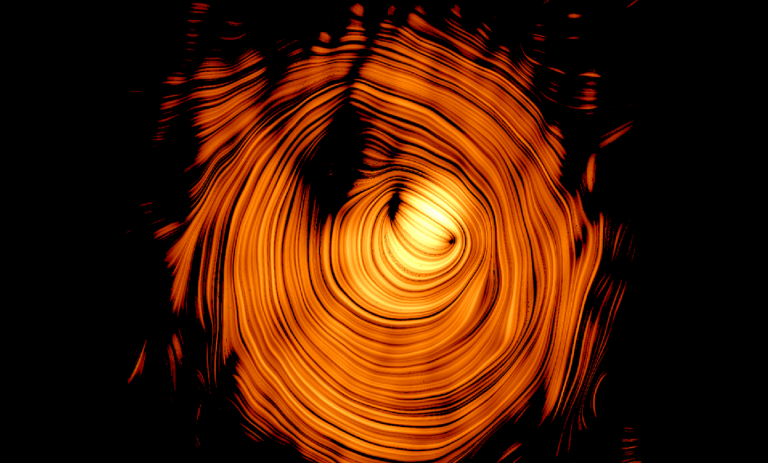
Detecting gravitational waves have always been a challenging task. It is caused due to high energetic events, like colliding black holes or neutron stars. And so, the phenomenon is like ripples on the fabric of space-time. By the time, this effect reaches us (from deep space), the signals become extremely weak. And hence, too faint to detect.
In terms of magnitude, as per astronomers, the ripples in the fabric of space-time stretch and squeeze space by a tiny fraction of the width of an atom. It’ll be like measuring height of a pebble, which is lying at the bottom of an ocean, from a thousand miles away. This is not the only problem. There is also cosmic noise cluttering up the detectors.
These interferences are signals and disturbances that fill the cosmos. This noise comes from all sorts of sources, like the random movements of particles, magnetic fields, and even distant celestial objects.
Why are Gravitational Waves Important?
Diving into these waves from the early universe will really help us piece together our cosmic story. It will be like the insights gleaned from previous discoveries such as the cosmic microwave background. In a way, it’ll help us in connecting the dots across time and space.
In addition, by studying these events, scientists can gain insights into the behavior of matter and gravity under extreme conditions. Thus, it will help us in refining our understanding of the laws of physics. After all, it is an important tool for exploring the universe.
Analyzing Pulsars for Gravitational Wave Detection
Thinking on these lines of thought, a team of researchers, at University of Florida, have developed a method to detect gravity waves with low frequencies. The new approach revolves around analyzing pulsars, which are neutron stars emitting radio waves at incredibly consistent intervals.
According to Jeff Dror, the author behind the study, tracing gradual slowdown in the arrival of these pulses can potentially surface previously undetected gravitational waves.
Dror has already managed to probe gravitational waves with frequencies lower than ever recorded. He was able to extricate this data by delving into existing pulsar data. Thus, he expanded our “hearing range” to frequencies as low as 10 picohertz.
To put it into perspective, a picohertz is one trillionth of a hertz, which is a measure of frequency. So, by being able to detect waves at 10 picohertz, we can now pick up gravitational wave signals that are much slower and have longer wavelengths than those detected before. This amazing breakthrough opens up a brand-new window into the deep space.

Probing the Cosmos at Ultra-Low Frequencies
From nanohertz-level, (one billionth of a hertz) the observable window went to 10 picohertz (one trillionth of a hertz). Each step down the scale gets weaker and fainter, revealing even slower frequencies for us to explore in the cosmos!
By studying these gravitational waves at even lower frequencies than before, scientists hope to gather more clues.
Although, different events in space create waves with different “signatures”. Its like the fingerprints of that particular event. So, by tuning into these lower frequencies, astronomers can pick up subtler details that can help them figure out what really caused these waves.
Takeaway
By studying gravitational waves at lower frequencies, astronomers would gain insights into the mechanics of cataclysmic occurrences such as black hole mergers and neutron star collisions.
Additionally, the new data will help us in peering further back in time. And potentially uncover clues about the universe’s infancy and the processes that shaped its evolution. Over all, the future implications of pushing the boundary on ultralow frequency gravitational waves are boundless and exciting at the same time.



